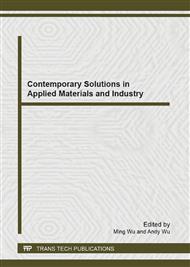p.307
p.312
p.317
p.322
p.327
p.333
p.339
p.345
p.351
Temperature Field Analysis of High-Speed Gasoline Engine Cylinder Head Based on Fluid-Solid Coupling
Abstract:
As the important part of the internal-combustion engine, cylinder head bears high thermal loads and mechanical loads. In order to analyse the merits or defects of cylinder head cooling system , built the 3-D model of cylinder head, and analysed the heat transfer processes between cylinder head and cooling water by fluid-solid coupled simulation in STAR-CCM+. The pressure nephograms and velocity vector of cooling water in the water jacket, and the whole temperature distributions of cylinder head were acquired. And analysed separately the temperature fields of fire power faces and exhaust passages which were under high heat loads .According to the analysis results , the structrue of cylinder head water jacket was evaluated and corresponding suggestions was put forward.
Info:
Periodical:
Pages:
327-332
Citation:
Online since:
April 2013
Authors:
Keywords:
Price:
Сopyright:
© 2013 Trans Tech Publications Ltd. All Rights Reserved
Share:
Citation:


